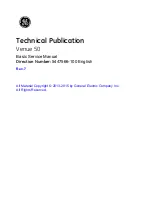
34
3.10.2 Protecting a system with active crossovers
The BEHRINGER ULTRA-DYNE PRO can be deployed in two ways in systems with electronic crossovers.
Either use it in the main insert as described in 3.10.1, or before the power amplifier. With this arrangement, the
BEHRINGER ULTRA-DYNE PRO covers the entire frequency range.
Alternatively, insert the BEHRINGER ULTRA-DYNE PRO between the output of the crossover and the input of
the power amplifier to process a specific frequency band. This form of deployment is particularly useful to
protect the most sensitive components of a multiway speaker system from destructive signal levels. If, for
example, the tweeters of the system are damaged regularly, it would be necessary to either run the entire
system at a lower sound pressure level or replace the tweeters with different models. Using the ULTRA-DYNE
PRO in the relevant high-frequency band prevents the overload and thus the destruction of the speakers.
3.10.3 Audio enhancement of processor-controlled PA system
A processor-controlled PA is a system with a special active crossover system. The outputs of the crossover
are connected to the speakers via separate power amplifiers. Each band of the crossover has its own limiter
as a protection against excessive signal peaks. This prevents the overload of the power amplifiers and/or
destruction of the speakers.
The limit frequencies of the crossover change with the level to reproduce a "natural" frequency response. In
some case, however, this function tends to cause more of a deterioration than an improvement of the audio
quality. If the ULTRA-DYNE PRO is installed upstream of the processor, signal peaks can be limited in
advance before reaching the processor's limiters. This results in a more natural sound, free of unwanted side
effects.
3.11 The deployment of the ULTRA-DYNE PRO in conjunction with multitrack machines
When used with multitrack machines, the BEHRINGER ULTRA-DYNE PRO can be used to prevent distortion
resulting from tape saturation and to improve the S/N ratio.
The configuration of a compressor or limiter for this application is not particularly problematic, as technical
specifications such as tape saturation levels, total headroom and output levels are generally known in ad-
vance. Limiting the audio level permits a better utilization of the dynamic range of the tape material, which also
significantly improves the S/N ratio.
3.12 The ULTRA-DYNE PRO in the broadcasting field
Dynamics processing tools are commonly used by TV and radio stations to achieve maximum transmission
power.
What is loudness?
Loudness is defined as the ratio of the average level of the program material to its peak value with regard to
amplitude and duration. A higher average level for the program material, i.e. greater duration at high levels, is
perceived as louder by the listener. This higher average level can only be achieved by a substantial restriction
of the dynamic range, resulting in a loss of sound quality.
A primary goal of radio and TV studios is thus to ensure that the listener experiences the same sound as in
the studio. The fact that a greater dynamic range is audible in a studio than in a residential environment with
its typical background noise works against this aim. Audio engineers counter this problem by deploying
compressors in the transmission path. It's obvious, however, that subsequent compression is unsuitable, as it
changes the audio characteristics of the entire production.
A further point is that the recording team generally only uses average values (VU meters) for orientation and
thus overlook impulse peaks that can require drastic signal corrections by the broadcasting limiter.
Thanks to its multiband technology, the ULTRA-DYNE PRO is able to provide inaudible corrections of the
dynamic range, permitting downstream equipment to operate in their optimal ranges without the danger of
3. APPLICATIONS
















































